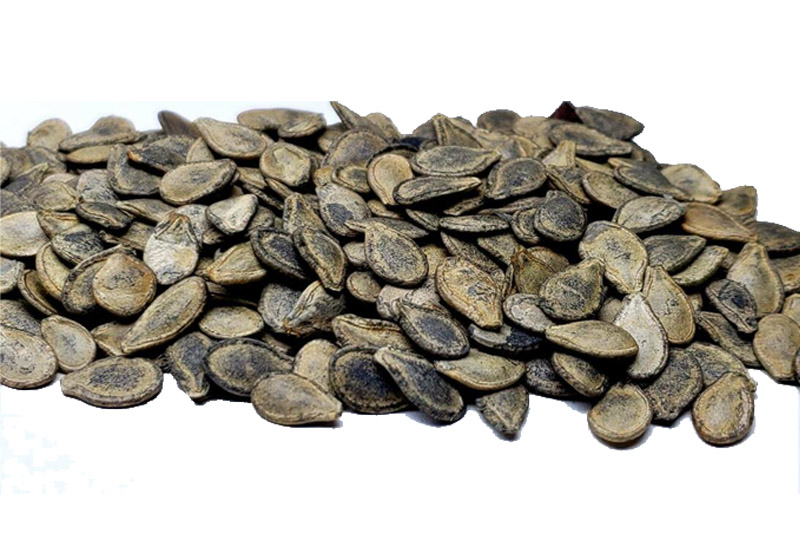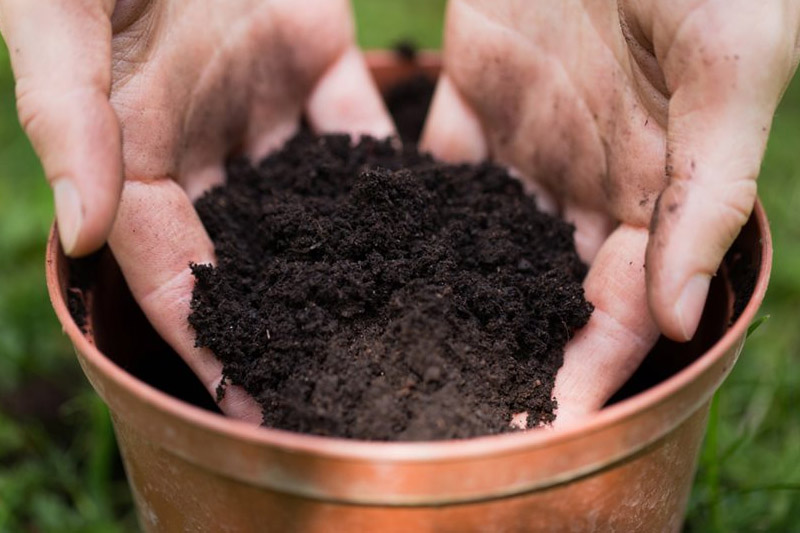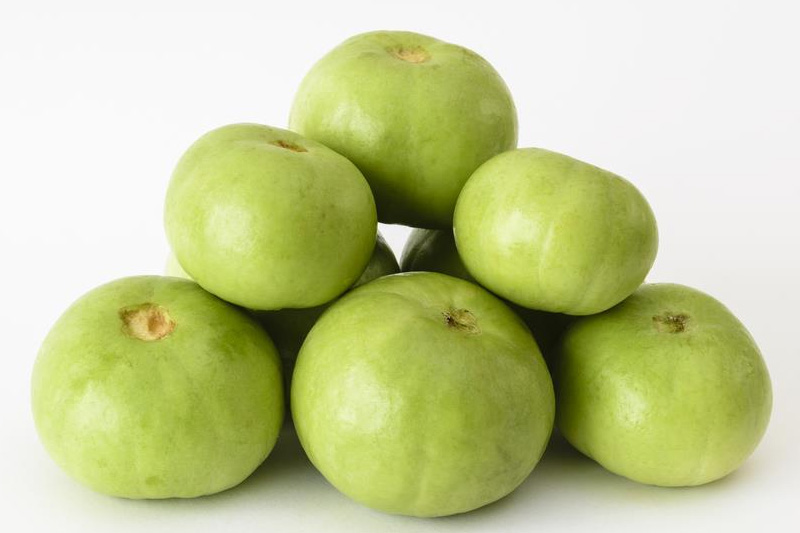How to Grow Apple Gourds? Tinda, also known as Praecitrullus fistulous or apple gourd in the United States, is a light green cucurbit that is widely cultivated in certain regions of Northern India and Pakistan. The bland fruit’s meat is used in curries with hot spices. Tinda quickly learns to vine vertically, making it an excellent container plant. The fruits of medium size will develop more healthily.
What is Apple Gourd?
Tinda, a little gourd, is indigenous to India. When ripe, it is light green, and when it is overripe, it turns yellowish-white. The plant features large, dark-green leaves and sprawling tendrils with needle-like hairs. Each plant produces both male and female flowers and self-pollinate; its blossoms are big and bright yellow. The round melon is roughly the size of an apple and has a top that is slightly flat.
How to Grow Apple Gourds in Containers?
Growing tinda in a container makes a lot of sense because you can keep the vines under control reasonably quickly. Tinda vines can tangle and harm other plants if left to their own devices, and they are soon hard to harvest. Tinda cultivation in containers addresses the most difficult issues while utilizing the perfect environmental factors for this unusual Indian vine.
1. Apple Gourds Seeds to Grow Apple Gourds

Tinda seeds will readily start as soon as temps are above 70 degrees. In warm soil, seeds can germinate in as little as seven days, but if the soil temperature is below 65 degrees, it could take longer than two weeks. Mold, rot, and fungus are more likely to grow in cool soil. Tinda seeds are best started indoors before being transplanted into containers.
Soak tinda (Apple Gourds) seeds in water for about 8 hours before placing them in a moist folded coffee filter or paper towel to start them indoors. When the seed sprouts, place it in a cup or tray filled with garden soil. Place growing seeds shell up in half-inch deep holes. Press the earth lightly against the sprout.
Tinda seeds can be cultivated within two to three weeks before the last frost date and transplanted when temperatures begin to rise. When seedlings are four to five inches tall and have numerous genuine leaves, transplant them into containers. The first two leaves that grow from tinda seeds are known as cotyledons. The first leaves will appear around the second week of growth.
2. Container Size to Grow Apple Gourds
Growing many tinda plants in a large pot or garden box is sufficient. They can even grow in a five-gallon bucket.
A container at least 12 inches deep will provide plenty of space for the roots. Because tinda plant roots decay in standing water, make sure your container has good drainage. An ideal container for one plant should be roughly 15 inches in diameter.
3. Fill a Container
Assume you’re utilizing an extremely large container. In that scenario, you can fill the gap with goods such as plastic water bottles, packing peanuts, and other clean items. These items will improve drainage and take up space, ensuring that you are not purchasing dirt that will not be used. You should not put gravel at the bottom of your container. Gravel compacts over time and inhibits water from draining, generating the difficulties you’re wanting to avoid.
Starting with good soil is the greatest approach to ensuring healthy plants. Mix potting soil, perlite, and organic compost together, then add a little amount of river sand. This mixture will provide the plant with the nutrients it requires while also encouraging drainage. Make sure your planter has drainage holes in the bottom that are large enough to prevent the container from storing water.
4. Install a Trellis
Tinda plants require a trellis to climb, which is especially useful when growing in containers. Even though the tinda plant may not require a trellis for several weeks, the structure should be installed the same day the seedlings are transplanted into the containers. You won’t damage the growing roots of larger plants this way, and the new seedling will begin to grow toward the trellis, making training the vines easier.
5. Trellis Works in a Container
A tomato cage can be used to train your tinda plant in a container. You can also create a trellis by mounting lattice panels to a fence near where the container will be put. You can even line up many containers with a pole securely planted in the ground. Connect the poles with gardening twine and allow the tinda plants to grow on the threads.
One of the most enjoyable aspects of cultivating vining plants is the variety of imaginative methods in which climbing structures can be provided. The vines can grow to be about six feet long. Tinda vines can be grown around a fence or over an arch to create a stunning focal point in your yard.
6. Soil Conditions

Tinda thrives in a variety of soil types and can flourish even in arid, sand-filled environments. For the best fruit production, work organic compost like steer manure into the soil a few weeks before transplanting.
To avoid standing moisture, your soil should drain efficiently. In your garden, if you’re planting tinda, make mounds that are about 10 inches tall and plant two to three seeds in each mound. By the time they reach five inches in height, they are thin to one or two.
7. Light Conditions
For your tinda plant, you should choose a location with ample of sunlight. Drought-resistant and tolerant of high summer temperatures is this vining plant. In regions with some sunshine, you’ll see reasonable growth, but the longer the plant sits in the shade, the less fruit it will produce.
8. Watering to Grow Apple Gourds
Tinda plants do not consume a lot of water. Monitoring the soil is the best approach to water tinda in a container. Between waterings, let the topsoil dry. Most plants won’t need more than two or three weekly waterings.
You should water your tinda with a can rather than a hose when you place it in a planter or other container. Water is only applied to the plant’s base, where it is slowly absorbed. The risk of fungi growing makes it best to avoid getting the leaves wet.
9. Harvesting Apple Gourds

Most tinda cultivars will produce ripe round melon gourds between 50 and 90 days after seedlings are transplanted. When the gourds are full in shape, heavy, and green, they are ready to harvest. When the gourds turn yellow-white, they are overripe.
To harvest, simply remove the gourd stem off the vine using a sharp knife. When harvesting, take careful not to drag the vine because it can easily snap.
How to Grow Apple Gourds in Pot?
Tinda is a favourite for planting in pots due to its rich foliage and quick growth rate. The vines are able to climb well, producing a considerable crop in a little area. They are perfect for tiny patios, porches, and gardens.
These plants thrive in light and heat, and they produce vivid green leaves on protracted vines in the summer and fall. The petals are excellent at luring helpful pollinators, which aid in the development of tinda gourds. Tinda grows beautifully and intrigues as a houseplant.
Pests and Diseases
Many common problems can kill your tinda plant. Learning to recognize common signs of a problem quickly will aid in the prevention of the most serious issues. Tinda is infested with numerous pests and can become infected with a variety of pathogens.
1. Pests
The type and amount of pests that may attack your tinda gourd plants vary depending on where you live. Gardeners in the United States are frequently plagued by whiteflies, fruit flies, and a variety of beetles. Whiteflies are particularly dangerous because of their rapid population growth. Whitefly infestations can wipe out an entire crop.
Whiteflies can be found on the undersides of leaves. They are related to aphids and suck the sap, leaving honeydew behind. Ants are drawn to the honeydew dropped by whiteflies. Assume you catch whiteflies before the population grows. In that case, you may only need to spray your plants with water to get rid of them. More severe infestations should be treated with a neem oil spray applied in the evening, focusing on the bottoms of the leaves.
2. Diseases
- Mildew shows as a whitish fluff on leaves, especially near stem junctions. Mildew is caused by a fungus that resides in soil.
- Blight is caused by bacterial infections. It will manifest as leaves dying suddenly at the tips or edges. Leaves will fade, droop, and fall off soon.
- Root rot is caused by a fungus that grows in overly wet soil and causes the roots of the tinda plant to rot away, killing the plant.
Also Read: How to Grow Broccoli from Stem?
